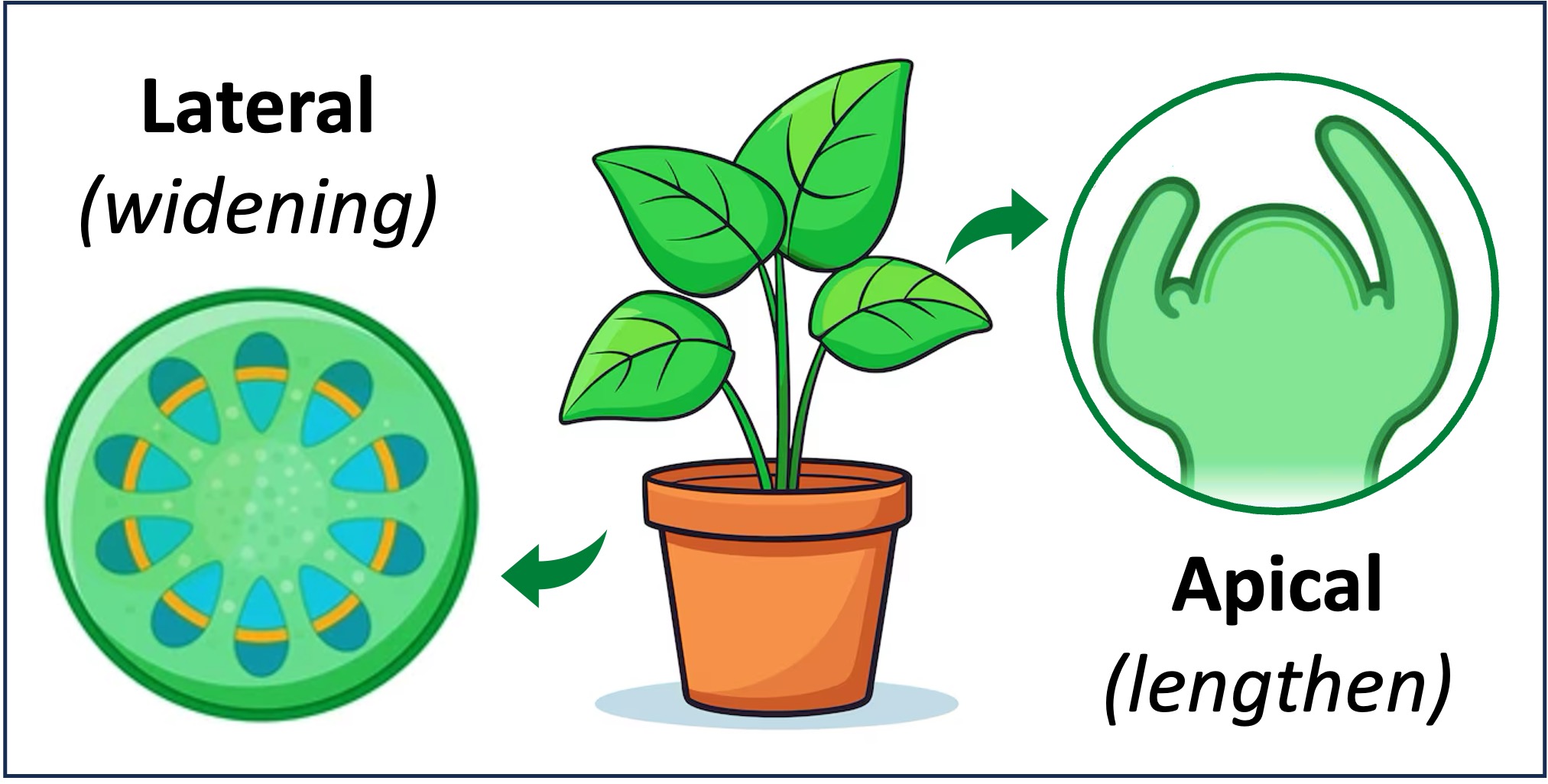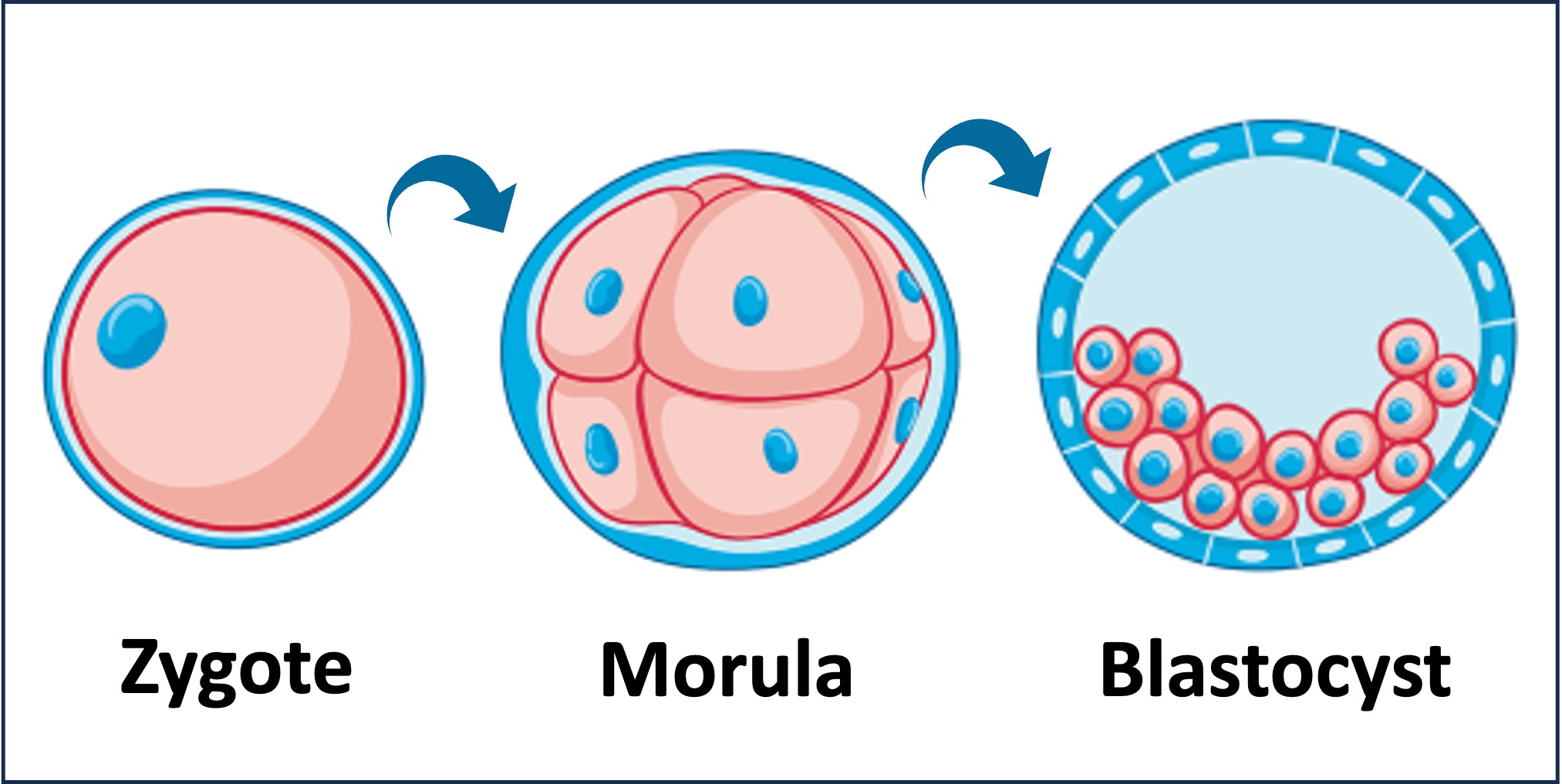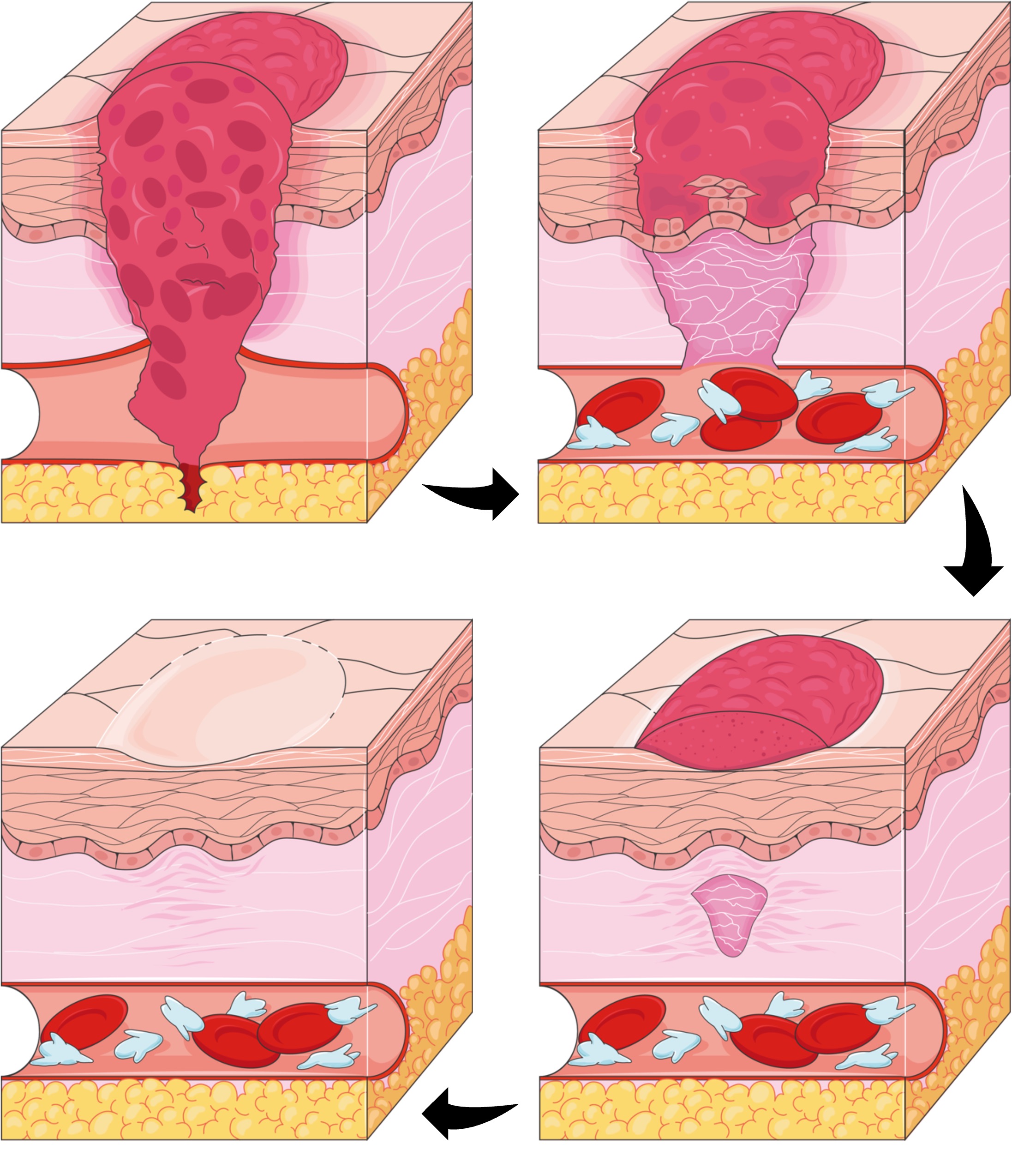

Cell Proliferation
Cell proliferation describes the process by which cells grow and divide to produce daughter cells in multicellular organisms
-
Cell proliferation allows for organismal growth, the replacement of dead cells and tissue repair
Growth
The initial growth and development of a multicellular organism is mediated by the proliferation of undifferentiated pluripotent stem cells
-
In animals, the rapid division of a zygote results in a mass of pluripotent stem cells (morula) that differentiate to form a blastocyst (early stage embryo)
-
Plants retain pluripotent cells throughout their lifespan in specialised tissues called meristems
-
Apical meristems are responsible for primary growth and cause the lengthening of both shoots and roots
-
Lateral meristems are responsible for secondary growth and cause the thickening of stems
-

Plant Meristems

Animal Embryos
Repair
Cell proliferation can also be used to replace cells at the end of their lifespan or regenerate tissues that have been damaged
-
Red blood cells have a life expectancy of ~120 days, while the epidermal cells of the gut lining last for less than a week
-
In animals, multipotent stem cells are stored within specific stem cell niches (e.g. bone marrow and hair follicles)
-
These niches provide the chemical signals needed for the stem cells to differentiate into the types of tissues needed






